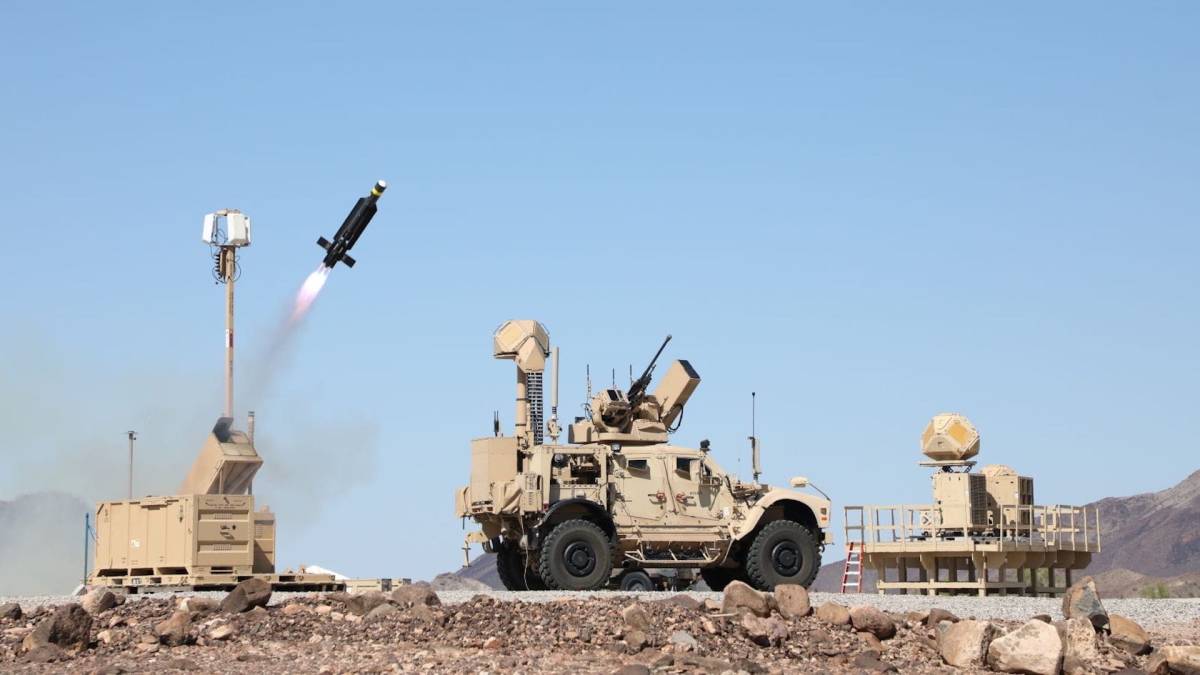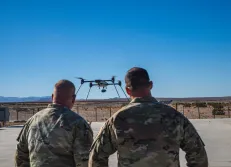Pentagon to test whether counter-drone systems can operate effectively under electronic attack

The Defense Department wants to see whether industry’s drone killers can get the job done while operating in a contested electromagnetic environment.
The technical demonstration, slated to be conducted early next year, will be overseen by the Joint Counter-small Unmanned Aircraft Systems Office (JCO), according to a new sources-sought notice.
The event is being planned as concerns grow about the threats posed by enemy drones and electronic warfare arsenals. While the U.S. military has its own EW weapons and other tools to defeat adversaries’ uncrewed aerial platforms, it also recognizes that American defensive systems could also be jammed.
“The JCO is interested to understand industry’s C-sUAS capabilities that can operate in a contested electromagnetic environment,” per the RFI.
The next event in the office’s series of demos, dubbed Demonstration 6, will include systems that fall under two different capability sets: those that can detect, track, identify and defeat Group 3 drones within 2-kilometer slant range from the platform, and those that can help dismounted forces do battle against Group 1 and Group 2 UAS.
For the former, the JCO “is specifically interested in small arms munitions at or below 40mm and kinetic interceptor effectors,” the document notes. For the latter, tools could include “handheld weapons, personal weapon affixable systems such as enhanced optics and warfighter wearable systems.”
Officials want to put these technologies through their paces in an environment where there’s interference or “adversary effects” across the electromagnetic spectrum — such as active jamming — within the frequency ranges of 30-20,000 megahertz.
“The sensor systems must effectively operate while being actively interfered with or targeted by adversary jamming systems or experiencing other electromagnetic interference. The sensor systems must then accurately cue effector systems that are impacted by the contested electromagnetic environment. Finally, the effector systems then must effectively defeat, deny, or degrade threat UAS within this contested environment,” the RFI states.
Some of the suggested methods to enable system resiliency and operational success include incorporating low probability of detect (LPD), low probability of intercept (LPI), adaptive beamforming, frequency hop, and other means to maneuver across the EMS.
“The C-sUAS platforms must have the ability to understand they are being impacted within the EMS and autonomously maneuver elsewhere within the EMS or enact other resiliency measures to enable functionality, continued operation, and successful mission performance,” according to the document.
Responses to the RFI, which will inform planning for the event, are due Aug. 6.
The JCO and the Rapid Capabilities and Critical Technologies Office in recent years have been holding a series of industry technical demos focused on finding potential solutions to some of the most pressing drone threats. The notice about Demonstration 6 was released just a few weeks after the completion of Demonstration 5, which took place last month at Yuma Proving Ground, Arizona.
“Adversary sUAS represent a rapidly proliferating, low cost, high-reward, and potentially damaging and lethal capability against U.S. personnel, critical assets, and interests. Examples of this growing threat are seen in Ukraine, Israel, and by our own forces at deployed locations overseas,” Defense Department officials wrote in a fact sheet about that event.
Eight companies — Clear Align, Trakka USA Defense, Ideas, Commitment, Results (ICR), ELTA North America, Teledyne FLIR, Science Applications International Corporation (SAIC), Advanced Technology Systems Corporation (ATSC) and Anduril Industries — brought a total of nine systems to Yuma to see how they fared against swarms of up to 50 small unmanned aerial systems, including a mix of fixed-wing and rotary-wing Group 1 UAS as well as “slow and fast” Group 3 fixed-wing drones, to include jet-powered platforms.
Industry’s counter-drone technologies included a variety of sensors and weapons, such as multi-mission radars, electro-optical/infrared cameras, radio frequency scanners, RF jammers, guided rockets, “kinetic interceptor drones” and small arms munitions, according to the fact sheet.
During a call with reporters this week, officials declined to disclose the results of the demo in terms of how well specific systems performed.
“It was a very successful demonstration informing U.S. and our allies about what capabilities exist out there,” said Col. Michael Parent, chief of the JCO’s acquisition and resources division. “The challenge of the profiles really meant that no one characteristic no one capability, whether kinetic or non-kinetic, in itself could really defeat this kind of a profile. So what we saw was that you really do need a full system-of-systems approach, a layered approach.”
He noted that the drone swarms that the systems were up against last month created a “very challenging” threat profile.
Demonstration 6 – which is expected to take place in or around March 2025 — will pose additional challenges for industry, with an increased focus on operating against EMS threats to their systems. The Pentagon has not yet selected the vendors for next year’s event.
Brandi Vincent contributed reporting for this story.






